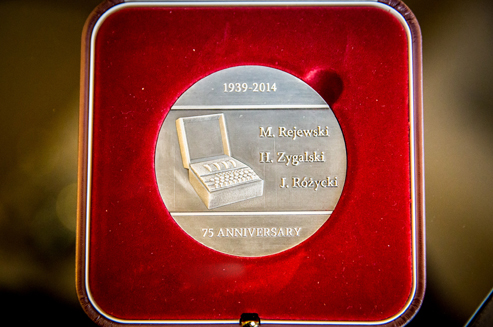“The history of intelligence knows few examples of such seminal cooperation of cryptological services of allied states as this one,” said chief of the Intelligence Agency Brigadier General Maciej Hunia. He recalled that Polish cryptologists had made a key contribution to the breaking of the Enigma code. They were three mathematicians from the University of Poznań: Marian Rejewski, Henryk Zygalski i Jerzy Różycki. They broke the first Enigma code as early as in the 1930s and continually improved equipment that was used to decipher German army dispatches.
Enigma is a German portable electromechanical encoding machine with a series of rotor blades designed by Artur Scherbius, and later produced by Scherbius & Ritter. It was first used for civil and commercial purposes, and later its improved version was applied to military purposes. In the 1930s and during WW II the machine, in different versions, was the basic encoding equipment used by the German army.
Poland handed over Enigma’s codes to British and French allies several weeks before the outbreak of WW II on 25 July 1939 in Pyry, a suburb of Warsaw, the seat of the Polish intelligence service’s cryptologic centre.
Allied intelligence services had worked for years to break the Enigma code, but without the contribution of Polish cryptologists it not have been possible. During WW II, the code to Enigma was also handed over to the US Army. Polish cryptologists continued to work in radio intercept centres of the French and British intelligence services during the war.
Representatives of Allied intelligence services underscored the contribution by Polish cryptologists in breaking the Enigma code and the importance of applying mathematics to cryptological research for the creation of future computers which evolved from advanced computing machines. The Intelligence Agency has minted a commemorative medal on the occasion of this year’s jubilee and ceremony.
Author: Marcin Wojciechowski /MFA Press Office
Photo © M.Kosiński


